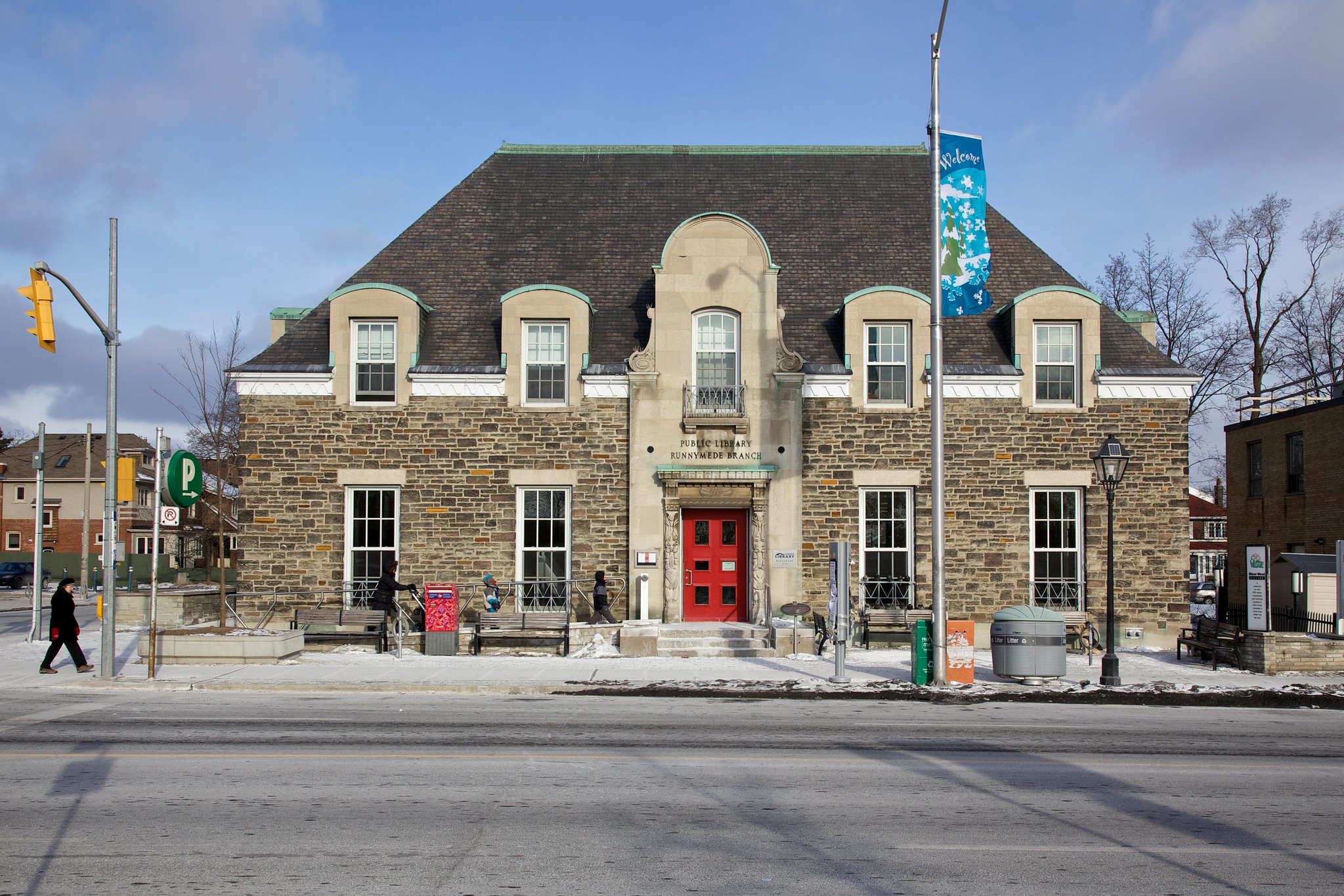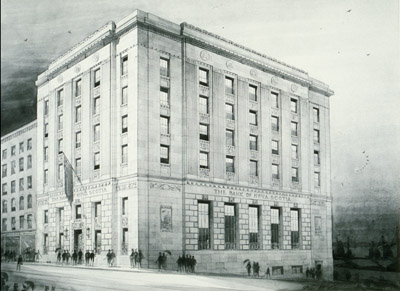The design for the Runnymede Library on Bloor Street West at Glendonwynne Road in Toronto was created in 1929 by architect John Lyle during a very fertile Canadian-style period, and is one of his most enduring works. The building combines styles and architectural elements inspired by Canadian and Northwest Coast Indigenous culture, forms, materials and details.

Conception of the Runnymede Library
As part of an ongoing building program, the Toronto Public Library board commissioned a design from John Lyle, the architect behind Toronto’s Royal Alexandra Theater and Union Station. Lyle chose an assortment of typically Canadian styles and architectural elements in response to the shortcomings he saw in the new wave of European modernism spreading throughout the world during the 1920s. Finding it too generic and lacking in national flavour, John Lyle explored local and regional forms and combined French, English and Indigenous elements (see Northwest Coast Indigenous Art).
Style and Layout
The Runnymede library’s design is dominated by a steeply pitched black-slate roof with bellcast eaves inspired by Québécois forms, variegated walls of local red and yellow Credit Valley limestone, and a dressed-stone main entrance. This doorway is framed with totem poles of stylized ravens, beavers and bears. The references to Northwest Coast Indigenous motifs and themes continues in the building's ironwork, which includes the inverted triangle and the arrowhead pattern, while the cornice is decorated with the dogtooth pattern. Other Canadian motifs highlighted in the stonework are Indigenous portraits adorned with headdresses, lilies, pinecones (see Pines Trees in Canada) and keystones of squirrels.
The Runnymede Library's floor plan separates the users' functions. The lower floor, with the main entrance on Bloor Street, was designated for adults. It features a large open space for the reading room, with the book stacks against the walls, and staff quarters in the rear. Large, low windows supply ample interior light and give the building an open, inviting atmosphere. The west elevation is for children and is less formal, with a separate entrance and a staircase leading to the second-floor reading area.
Honours
The library board believed the building was one of the most beautiful branch libraries in Canada, but it wasn't until 1989 that the Runnymede Library took its rightful place in the pantheon of nationally significant architecture.
When selections for the high-value postage-stamp series “Our Nation's Buildings” were made, Canada Post's advisory committee selected prototypes from a diverse range of architecture with the only proviso that the buildings be in good repair and in current use. The first to be honoured in this series, because of its uniquely modified modern style and Canadian themes that incorporated a rich array of French, English and Northwest Coast Indigenous carved-stone motifs, was the Runnymede Library.
(See also Northwest Coast Indigenous Art.)

 Share on Facebook
Share on Facebook Share on X
Share on X Share by Email
Share by Email Share on Google Classroom
Share on Google Classroom



